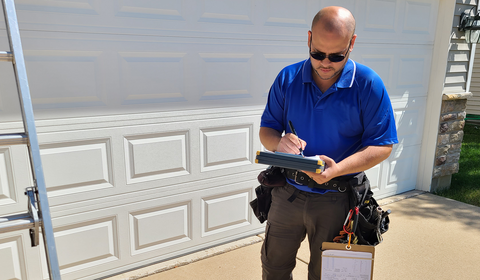To be a successful adjuster, you have to stay on top of desirable certifications and licenses. Your adjusting license is the first step to becoming an adjuster and while they are not always required for deployments in non-licensing states, they are an essential tool of the trade. Now this doesn’t mean go out and get every license and certification imaginable, but this in-depth exploration of licenses is worth noting. Having multiple adjuster licenses enforces your commitment as an adjuster.
Start off with your home state license. 34 states require an adjuster license and it’s important to do research about how to apply for your license, the cost and timeline of the process. Certain states like FL, GA, and NY require adjusters to successfully pass an exam before obtaining a license. If you live in a state where a license is not required, you should still obtain a designated home state license.

The following is a list of non-licensing states for adjusters:
- Colorado
- Delaware
- Illinois
- Iowa
- Kansas
- Maryland
- Missouri
- Nebraska
- New Jersey
- North Dakota
- Ohio
- Pennsylvania
- South Dakota
- Tennessee
- Virginia
- Wisconsin
It is popular for many adjusters to acquire a designated home license in Texas or Florida due to their high weather activity and reciprocity. Most states allow reciprocity once you have a home state or designated home state. Even though the state is reciprocal, you would still have to submit an application for a permanent adjuster license. However, the reciprocity allows you to skip any exams that the state may have. For example, if your resident adjuster license is Texas, then you can just apply for your Georgia adjuster license directly through the state’s department of insurance rather than registering for the adjuster exam.
There are three states that require an exam despite having a resident adjuster license elsewhere: New York, California and Hawaii. New York is known as the “golden ticket license” because of its challenging exam. There is a small pool of adjusters that have an active NY license, so deployment opportunities greatly increase for adjusters that do have a NY license.
The next thing to consider once you have established your initial licenses is what kind of claims you want to work on. There are a variety of license classes and lines of authority you can add to your adjuster license. These areas normally dictate the types of claims you are allowed to handle – automobile, property and casualty, and more! Unless you only want to focus on one area of claims, consider getting an All-Lines, general lines, or property & casualty adjuster license. They are the most comprehensive authority for adjuster licenses. Adjusters are typically able to handle both auto and property claims under this scope depending on the state requirements.
Becoming licensed is the first step for an adjuster, but the importance of licensing does not end there. The adjusting industry is in constant flux, so it’s important to stay deployable and committed by keeping your skillset and licenses up to date and desirable. Be aware of your licenses’ expiration dates and be prepared to renew them!
To find out more about state licensing requirements and reciprocity, check out this interactive map by AdjusterPro. Each state also has its own respective Department of Insurance that explains the process and requirements. For example, if you’re interested in applying for a Texas adjuster’s license, please visit the Texas DOI. Another great resource for adjusters to apply or renew their licenses is NIPR. NIPR is a one-stop-shop for state requirements, adding a line of authority, and more!



